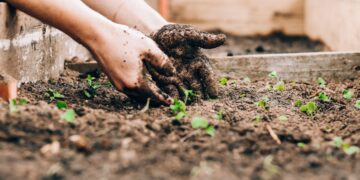On October 5, 2020, a family in China sat down together to enjoy breakfast — a tradition for many, but for them, it would take a deadly turn.
The meal, homemade noodles from the freezer, would tragically lead to the deaths of nine family members within hours, leaving everyone wondering: what went so horribly wrong?
A family breakfast turned nightmarish for twelve relatives in China on October 5, 2020, after a shared meal led to tragedy.
Embed from Getty ImagesThe unsuspecting family ate homemade noodles that had been frozen for over a year. Just hours later, those who’d eaten the meal fell critically ill, and soon enough, nine of them lost their lives.
The family had prepared Suantangzi, a traditional noodle soup made with fermented corn flour, something they’d frozen for “later.”
Embed from Getty ImagesBut this time, their usual freezing routine had a fatal flaw. After a year in the freezer, the dish had turned into a ticking time bomb, hiding a dangerous toxin that no one could see, taste, or smell.
Nine of the twelve family members decided to eat the noodles.
Embed from Getty ImagesThe younger kids at the table passed, mentioning that the noodles tasted “off.” Little did they know that decision would save their lives. Within hours, the nine who ate began to feel symptoms — intense nausea, stomach pain, vomiting — that worsened fast.
Hospital soon followed, but doctors were initially stumped, unable to pinpoint the cause behind the severe symptoms.
Embed from Getty ImagesThen came the grim revelation: tests found high levels of bongkrekic acid in the noodles and even in the victims’ stomachs. This wasn’t ordinary food poisoning; it was something much more sinister.
Bongkrekic acid, produced by the bacterium Burkholderia gladioli, can form in certain fermented foods if improperly stored, especially for long periods.
Embed from Getty ImagesIt’s both heat-stable and invisible — reheating can’t get rid of it, making the toxin undetectable and deadly. For the family, it was a fatal recipe, disguised as a harmless breakfast.
The acid does its damage quickly, attacking the liver, kidneys, and brain, with a death rate that can soar from 40% up to 100%.
Embed from Getty ImagesIn this case, it proved fatal for each family member who’d eaten the dish, a terrifying outcome of what should’ve been a safe, homemade meal.
Experts concluded that the noodles’ long freezer stint, combined with fermentation, allowed bongkrekic acid to develop in dangerously high levels.
Embed from Getty ImagesIt’s a stark warning for anyone who batch cooks and freezes leftovers — especially with fermented foods.
Leftover meals can be convenient, but sadly, they’re not always risk-free.
Embed from Getty ImagesProper food storage, freezing, and careful reheating are not just about taste — they can mean the difference between a safe meal and a risk no one should ever face.

















































